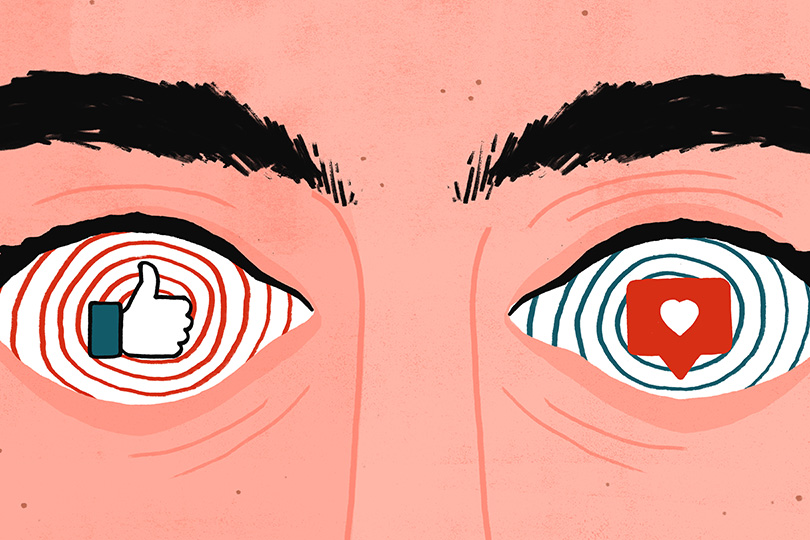As a marketing company becomes better at keeping up with competitors and improving its product, it gains a wider scope of choices. You might think this would encourage us to be more attentive to TV ads, but the practical reality proves otherwise.
David Mick, an ethical business researcher from Virginia, coined the term "choice overload" to describe the mental state that consumers experience. He wrote:
"The ideology of consumerism is spreading worldwide today, and one of the key aspects of this ideology is the availability of choices for the consumer. However, in today's advanced economies, purchases are increasingly made amidst the rise of new products, brands, and brand expansions, all in the face of growing demands and diminishing decision-making time" (Mick et al., 2004).
Mick and his team argue that choice overload confuses people. While a variety of options can be initially appealing, it ultimately becomes "unsatisfying and psychologically exhausting" (Mick et al., 2004). But more importantly, this affects people’s willingness to make a decision. In general, when there are a vast number of options, our focus tends to "decrease" as we examine them.
You might find this hard to accept, as we all like to think of ourselves as attentive and careful when choosing what we buy, especially with expensive items. Some of us truly are like this. Among my friends, there is a couple who spent weeks discussing another potential product to replace their old second car. They were debating whether to buy a sedan to replace the family car if it broke down, or a hatchback that they could use for transporting goods from the store. In the midst of their discussion, their washing machine broke down, and within an hour, they immediately went to a store and bought a Bosch washer (the reason will become clear shortly). The obvious truth here is that, despite considering themselves careful decision-makers who scrutinize every option, they used only their intuition and bought the first acceptable brand they came across.
Most of us act similarly when "forced" to make a quick decision regarding a purchase. However, the truth is that when it comes to brands, we often shortcut the decision-making process even when we have plenty of time to think about what we're buying. A study by Van Osselaer and Alba showed that those presented with product features and brand characteristics don't dive deeply into examining the product; they simply focus on as many essential characteristics as needed to support the brand they prefer, then pretend the rest don't exist.
For example, let's assume you're buying a laptop. Without any brand information, you have 26 features to review (product characteristics) such as: price, screen size, screen color quality, aspect ratio, screen density, hard drive memory, processor memory, processor model, battery life, charging time, weight, thickness, number of USB ports, internal or external CD drive, internal or external Wi-Fi, wired connection, fan noise, sound system, built-in microphone, built-in mouse, price, color, warranty period, reliability, and other operational features. After reviewing all this, you'll quickly decide that 9 product features (price, screen size, color quality, hard drive memory, processor memory, processor model, weight, built-in microphone, and number of USB ports) are enough for you to make a decision about the laptop, and you won't bother thinking about the remaining 17 features.
However, in reality, you're likely to visit your regular local computer store, which sells brands like Sony, Samsung, Toshiba, HP, Packard Bell, and a few other brands. There, you'll find a Toshiba laptop that has enough memory and is as light as a Sony, but half the price because of a promotion. You'll buy it despite only relying on 9 of the product features in your decision-making. Why? Because Toshiba is a brand with a good reputation, reliability, reasonable tech updates, and customer demand, plus you're saving some money, which is never a bad thing. This is how we think when it comes to choosing brands.
The question you never asked yourself during this process is: Was there something you might have seen in an advertisement about the product that helped you make the decision? There are many reasons why you likely didn’t ask yourself this. First: like all of us, you don’t pay attention to ads because you assume they won’t tell you anything new. Second: since you didn’t pay attention to any ad, you won’t be able to recall any Toshiba ad. Third: you didn’t need any extra information to choose your option, which justifies not exhausting yourself by focusing on the ad.
Of course, what you've forgotten is that when you chose Toshiba, you did so because you knew the reputation and reliability of the brand. The reason for this reputation and reliability is that over months and years, you saw "many" Toshiba ads on TV and in newspapers, and you forgot all of those ads, just like Walter Dill Scott forgot his visit to the tailor. If someone pressed you to explain why you chose Toshiba, you’d probably tell them that a friend bought it, but the truth is that you were influenced by those ads unconsciously, even though you didn’t realize it.
Without a doubt, you’ve noticed Toshiba, Sony, Apple, Samsung, HP, and Dell ads. Your situation might be better for making a logical, unbiased brand choice, but I’d guess you would only do that if you worked in marketing, advertising, or at a store like PC World. The rest of the "ordinary" people have better things to do with their time.
To illustrate how advertising can influence us easily, even when we don’t pay attention to it, let’s look at an intriguing case study.
Case Study: Orange
In January 2001, around the same time as the launch of O2, Orange Telecom in the UK aired a black-and-white TV ad about its wireless application services (WAP). This ad showed a variety of people looking at the camera, and their thoughts were conveyed by a voiceover, telling us that they could predict when it would rain, find traffic jams, and more, all through Orange’s network. I mentioned that the ad was in black and white, but it had one notable feature: everyone in it had an orange square in their palm, symbolizing that with Orange, all this information is at your fingertips. The ad was supported by a poster campaign that also showed someone holding an orange square. It was an impactful campaign. Research showed that more than two-thirds of people claimed they had recently seen Orange ads on TV, which was about twice the number who said that before the poster campaign began.
Six months later, Orange aired another ad announcing that it had once again been rated number one in customer service in the annual JD Power survey. This ad was quite unusual; it featured several short catastrophic scenes, such as a large vase rolling down stairs and breaking, and a woman smiling despite water pouring down the walls of her home. The idea was that the people experiencing these disasters were happy because Orange was their mobile service provider.
Now, one might argue that giving so much importance to your mobile phone that you can overlook your house flooding is a far-fetched idea. However, the fact that Orange had won the JD Power survey for two consecutive years is definitely impressive. The issue with this ad wasn’t that the message lacked credibility, but rather that the ad itself seemed to lack impact. The number of people who claimed they had seen Orange ads on TV remained unchanged. Moreover, no one appeared to remember anything about the ad, and there was no additional impact on the overall image of Orange. In short, you could say that the ad was a complete waste of money.
When I was working with another research company, we decided to conduct research on the Orange ad announcing its JD Power ranking. What we wanted to know wasn’t how many people could recall whether Orange had aired ads at that time, but how many people had actually seen the ad. We simply showed the ad to people and asked if they had seen it before. As we’ll see later, the memory recognition system is very robust, so when people said they had seen a particular ad before, we knew they were likely telling the truth.
We were shocked to find that more than half of the people we spoke to recognized the ad when it was shown to them. Therefore, the problem wasn’t with airing the ad. The bad news was that less than a quarter of those who recognized the ad knew it was for Orange.
But did this mean the ad didn’t influence their attitudes toward Orange? To find out, we asked them some questions about their perceptions of other mobile phone brands before showing them the ad. This allowed us to compare the evaluations of those who recognized the Orange ad with the evaluations of those who didn’t recognize it (and who most likely had never seen it). To avoid bias, we only considered the results of people who weren’t current Orange customers.
Here’s the second surprise. Remember that three-quarters of those who recognized the ad had no idea who the ad was for, and we found that despite most of them not knowing the brand being advertised, they consistently rated Orange higher than those who didn’t recognize the ad. The difference wasn’t small; the people who recognized the ad gave Orange a 50% higher rating in "customer care" and "ease of use," and double the rating in areas like "cooperation of customer service staff" and "recommended brand."
In other words, despite the fact that few remembered anything about the ad, and despite the vast majority of those who saw it on TV not knowing the brand, it seemed that the ad positively influenced the opinions of those who saw it. It appeared that the ad had an impact, not only without remembering the message but also without recalling the brand or any detail from the ad.
This may seem unlikely, but there have been two studies—one on the pet food brand "Butcher's Dog" in the UK, and the other on the life insurance brand Standard Life in the UK—that showed nearly identical results (Heath & Hyder). In both cases, ads increased brand favorability among






Comments